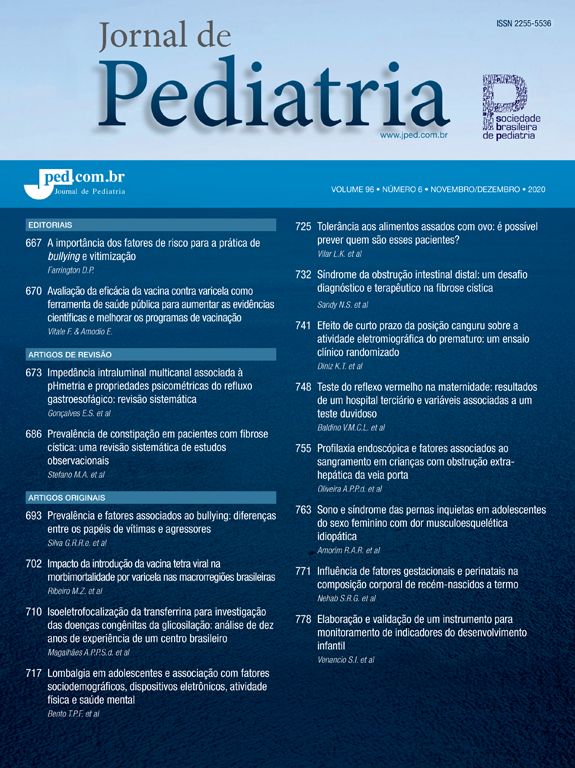The study was based on activities developed at Embu, SP, between October 1989 and June 1990. Its purpose was to study serological turning after child vaccination against measles at the age of nine months. Two groups were compared, both within the same age limits. Group number I included eutrophic children and group number II included undernourished children. Gomes criteria was used to evaluate the children's nutritional state. Antibodies (AB) dosage was done through hemagglutination inhibition (HI) and ELISA. These two laboratory methods were also checked regarding its sensibility. Out of 130 children studied, 80 could be evaluated. From this total, 56 (70%) belonged to group I and 24 (30%) belonged to group II. When the ELISA method was used, a significantly higher seroconversion percentage (P < 0,05 or 5%) was found among children belonging to group II. This percentage was not detected when the HI method was used.
O fator de impacto mede o número médio de citações recebidas em um ano por trabalhos publicados na revista durante os dois anos anteriores.
© Clarivate Analytics, Journal Citation Reports 2025
O CiteScore mede as citações médias recebidas por documento publicado. Mais informação
Ver maisSJR é uma métrica de prestígio baseada na idéia de que todas as citações não são iguais. SJR utiliza um algoritmo similar ao page rank do Google; é uma medida quantitativa e qualitativa ao impacto de uma publicação.
Ver maisSNIP permite comparar o impacto de revistas de diferentes campos temáticos, corrigindo as diferenças na probabilidade de ser citado que existe entre revistas de distintas matérias.
Ver mais







